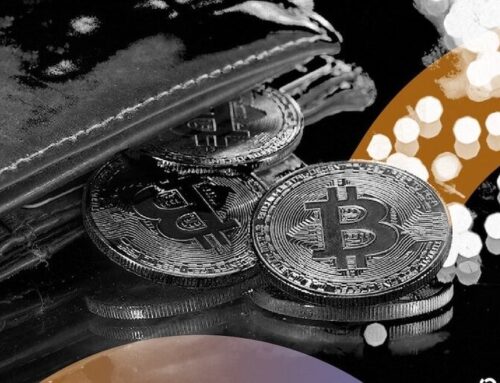5 Facts About Renewable Energy in Guinea-Bissau
October 25, 2025

Energy Poverty in Guinea-Bissau
Energy poverty in Guinea-Bissau is very high. In fact, half of the country, more than a million people, are still unable to access electricity. As of 2023, only 0.8% of the country had access to clean fuels that are able to be used for cooking. While one may associate clean fuels with a more efficient way of cooking, there are other benefits of cooking with clean fuels as opposed to cooking with non-clean fuels, such as a lower risk of dying from indoor air pollution. Non-clean fuel sources, such as charcoal, crop waste or even dung, leave people at risk of death and ill-health, as opposed to those who use clean cooking fuels. While one may think of renewable energy in Guinea-Bissau as something that will help out our planet, citizens of Guinea-Bissau think of it as a life-altering and potentially life-saving change to their everyday lives.
Facts About Renewable Energy in Guinea-Bissau
- Implementing Renewable Energy is a Challenge: Guinea-Bissau’s electric sub-sector is one of the least efficient in West Africa. This is due to several factors, including, but not limited to, waste, supply and demand issues, financial issues and low investments. This means that renewable energy in Guinea-Bissau may be harder to implement.
- Low Electricity Availability: The availability of electricity in the West African country is low; however, the addition of renewable energy in Guinea-Bissau would change this. In fact, as late as 2022, more than one million people across the nation still do not have access to electricity. On the other hand, more than a million people across the country do have access to power. Out of the country’s entire population, rural areas were the smallest group to have that access, typically staying at the same low levels from 2015 to 2022. With the implementation of renewable energy in the country, more communities would have access to electricity, which could benefit their businesses, home lives and education.
- A Delayed Power Plant: The development of renewable energy in Guinea-Bissau experienced a delay due to an unfinished power plant. A 15MV power plant was supposed to reach completion in November 2018 as a replacement for another power plant; however, the power plant did not begin operating in 2019.
- Increasing Renewable Energy: Despite the electricity issues Guinea-Bissau faces, its electricity supply, particularly that which is renewable, has increased. In fact, in 2021, electricity that was generated from renewable sources was at its highest, at 18.3 (GWh).
- Possibility of Increased Renewable Energy: Even with the lack of resources, renewable energy in Guinea-Bissau is possible. Currently, the country has a huge potential to commit to using renewable energy more than ever. Since 2018, the country has had more electricity than before, growing from 28.3 MW to 29.1 MW in about three years. Furthermore, more advancements are to come to the country’s renewable energy use in the near future.
Investments in Renewable Energy in Guinea-Bissau
The European Commission has collaborated with Guinea-Bissau in an attempt to help better the country and its citizens. Aside from strengthening education and climate-resilient practices when it comes to agriculture and fishing, Team Europe is investing in clean and renewable energy with solar plants in rural areas of the country. In addition to this, the two are working to promote sustainable and climate-resilient practices, which include the use of renewable energy and agricultural techniques to protect the environment.
As of March 2015, the European Union pledged 160 million euros (which is just less than $2 million in the United States) in order to help strengthen the rule of law within the country and consolidate democracy. While this was over a decade ago, it shows good signs as to what is to come to Guinea-Bissau, thanks to the EU. In fact, the article states that this is the resumption of support towards the country from the union, rather than the start. In a more recent development, in 2020, during the Universal Periodic Review by the United Nations Human Rights Council, Guinea-Bissau received 197 recommendations; the country taking 193 into account, most of which involved the issue of sustainable development.
The types of renewable energy Guinea-Bissau is hoping to implement in the country’s future has been recorded as recently as 2021, specifically from the International Renewable Energy Agency (IRENA). IRENA’s 2021 energy profile release of the West African country found that out of the total energy supply available in the country, 85% of it was renewable, compared to the other 15%, which was oil. Furthermore, a closer look into Guinea-Bissau’s renewable energy use found that 100% of the renewable energy used in 2021 came from bioenergy. As of 2023, the renewable energy capacity of the country was 100% solar instead of bioenergy. This may be due to the increase of solar power installations across the country.
Looking Ahead
While Guinea-Bissau is a low-energy country, more than a million citizens are still unable to access electricity; renewable energy in Guinea-Bissau would do wonders for the country. Between boosting the country’s economy to improving countless families’ lives, renewable energy would create access to a feature that half of the country has not had exposure to. While progress might seem far away, due to the issues involving the West African country’s resources, the European Union is working to make the seemingly impossible, not only possible, but possible in the near future. Right before the pandemic, the EU had implemented suggestions to the country to help it improve its sustainable development, and Guinea-Bissau took nearly all of them into account. While the future is always uncertain, the use of renewable energy in Guinea-Bissau is looking up.
– Megan Akers
Megan is based in Fredericktown, OH, USA and focuses on Technology and Solutions for The Borgen Project.
Photo: Flickr
Search
RECENT PRESS RELEASES
Related Post




